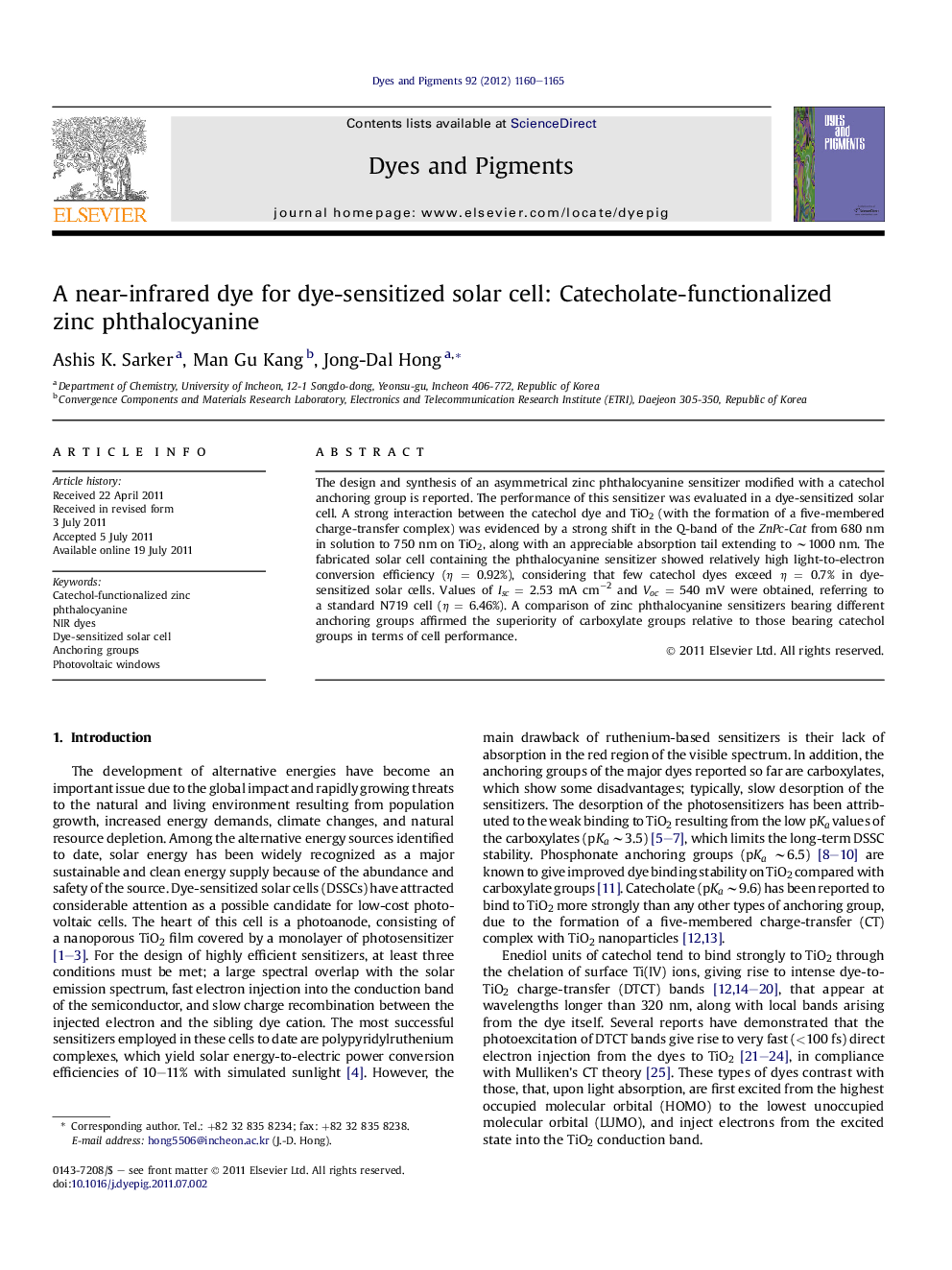| Article ID | Journal | Published Year | Pages | File Type |
|---|---|---|---|---|
| 177032 | Dyes and Pigments | 2012 | 6 Pages |
The design and synthesis of an asymmetrical zinc phthalocyanine sensitizer modified with a catechol anchoring group is reported. The performance of this sensitizer was evaluated in a dye-sensitized solar cell. A strong interaction between the catechol dye and TiO2 (with the formation of a five-membered charge-transfer complex) was evidenced by a strong shift in the Q-band of the ZnPc-Cat from 680 nm in solution to 750 nm on TiO2, along with an appreciable absorption tail extending to ∼1000 nm. The fabricated solar cell containing the phthalocyanine sensitizer showed relatively high light-to-electron conversion efficiency (η = 0.92%), considering that few catechol dyes exceed η = 0.7% in dye-sensitized solar cells. Values of Isc = 2.53 mA cm−2 and Voc = 540 mV were obtained, referring to a standard N719 cell (η = 6.46%). A comparison of zinc phthalocyanine sensitizers bearing different anchoring groups affirmed the superiority of carboxylate groups relative to those bearing catechol groups in terms of cell performance.
Graphical abstractFigure optionsDownload full-size imageDownload as PowerPoint slideHighlights► A zinc phthalocyanine dye modified with a catechol anchoring group was synthesized. ► The performance of this sensitizer was evaluated in dye-sensitized solar cell. ► Carboxylate group proved superior compared to catechol, in terms of DSSC efficiency. ► Red/NIR dyes are a key element in the development of photovoltaic windows.
